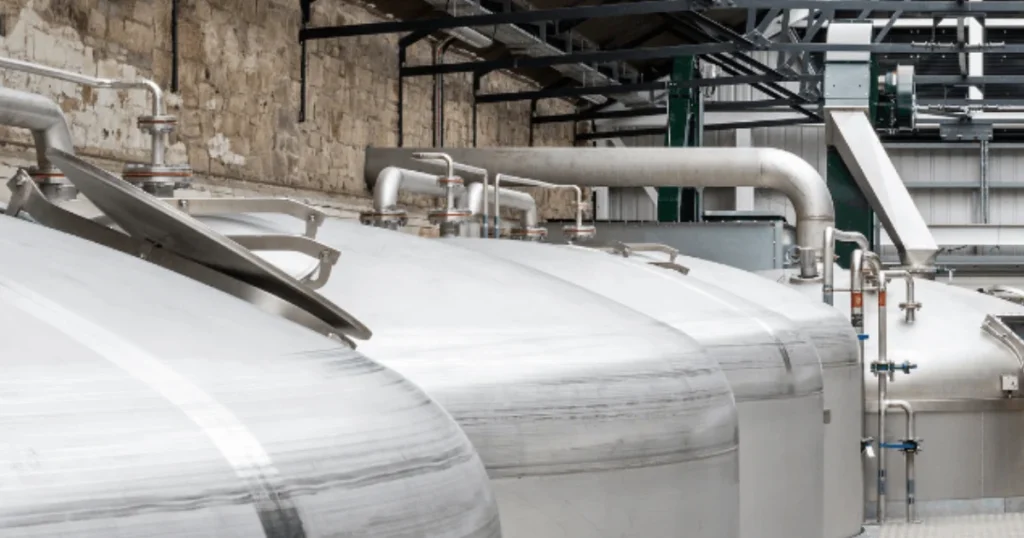Have you ever wondered how your favourite whisky gets its unique taste and aroma? The answer lies in the key steps of mashing and fermentation. These two processes are critical to the production of high-quality whisky and understanding them can help you appreciate the complexity of this beloved drink even more. In this blog article, we will take a deep dive into each step, from the breakdown of starch during mashing to the influence of fermentation on flavour.
We'll also explore why mashing and fermentation are such essential steps in whisky making and how they affect the final product. Finally, we'll discuss some of the factors that can impact these processes and ultimately determine the quality of your favourite dram. So sit back, pour yourself a glass, and let's explore the fascinating world of whisky-making together.
Table of Contents
Understanding Mashing in Whiskey Production
Mashing in whisky production involves the conversion of malted barley into fermentable sugars. This process begins with the addition of hot water to the mash tun, which extracts sugar and other compounds from the malted barley, resulting in the creation of a sugary liquid known as the wort. The presence of wort is essential for the whisky production process, marking the beginning of the next batch of whisky production. Enzymes play a crucial role in breaking down the malted barley during mashing, contributing to the overall success of this stage in whisky production.
The mashing process is a significant and indispensable stage in whisky production, where enzymes help to break down the malted barley, paving the way for subsequent stages in the production process. This step is vital for the extraction of fermentable sugars that are necessary for the fermentation and distillation processes.
The Process of Starch Breakdown in Mashing
As hot water mixes with malted barley, the process of starch breakdown commences. Essential enzymes, including amylase, significantly contribute to this crucial stage. The resulting sugary liquid, known as wort, forms the foundation of the whisky production process. Mashing is a pivotal step in converting the barley's starch into fermentable sugars. Through the mash tun process, involving hot water and malted barley, starch breakdown occurs, paving the way for subsequent stages in whisky production.
The combination of hot water and malted barley initiates the crucial process of starch breakdown, aided by enzymes such as amylase. This results in the formation of wort, essential for whisky production. Mashing facilitates the conversion of starch into fermentable sugars, setting the stage for subsequent steps in the whisky-making process.
The Role of Enzymes in Mashing
Enzymes play a crucial role in mashing, particularly amylase, which initiates the breakdown of starch into fermentable sugars. The process relies on enzymes to facilitate the conversion of malted barley starch into sugars, essential for the production of scotch whisky. Without the presence of enzymes, especially amylase, the breakdown of starch would be significantly hindered, emphasizing their importance in the mashing process.
When activated, enzymes aid in the conversion of malted barley starch into fermentable sugars, a fundamental step in the maturation process of whisky in oak casks. Their role extends to the breakdown of grain whiskies and malt whiskies, ensuring that the resulting liquid is rich in fermentable sugars, influencing the flavour of the whisky.
Different Mashing Techniques Employed
Distilleries implement a variety of mashing methods, each exerting distinct influences on the whiskey production process. Diverse mashing techniques adopted by different distilleries yield an array of whiskey flavours. The design of mash tuns and the temperatures employed during mashing contribute significantly to the diversity observed in whiskey production, impacting its final character and taste.
The utilization of different mashing techniques by distilleries directly affects the resulting whiskey flavour profiles. These varying techniques play a crucial role in shaping the distinct characteristics of the final products in whiskey production.
The Importance of Fermentation in Whisky Making

The conversion of fermentable sugars into alcohol and carbon dioxide occurs during the fermentation stage in whisky production. This crucial stage facilitates the transformation of sugars into alcohol, playing a significant role in the production of whisky. The sweet sugary liquid resulting from the mashing process undergoes fermentation, where yeast feeds on sugars to produce alcohol and carbon dioxide.
The fermentation stage is vital for the maturation process of scotch whisky, contributing to the flavour profile through the influence of various distillates. It also impacts the final runnings and influences the heat exchanger process. The resulting liquid, after fermentation, is essential in shaping the flavour of the whisky, reflecting the specific mashing and fermentation techniques employed.
The presence of living yeast feeds during the fermentation process contributes to the distinctive flavour of the whisky, making this stage essential in the production of high-quality scotch whisky.
The Transition from Mash to Fermentable Sugars
The pivotal stage in whisky production occurs during fermentation when yeast feeds on the sugars derived from the mash, ultimately resulting in alcohol production. This transition from the mash to fermentable sugars is crucial for the entire process. The sweet sugary liquid obtained from the mash undergoes a significant transformation during fermentation, where it is converted into alcohol. It is the fermentable sugars, initially derived from the mash, that play a key role in the entire fermentation process as yeast converts them into alcohol.
The interplay between the sugars in the mash and their conversion into alcohol during fermentation has a profound impact on the final flavour of the whisky. The influence of this transition on the overall character and quality of the whisky cannot be overstated. Understanding this critical transition from mash to fermentable sugars provides valuable insights into the intricate and nuanced process of whisky production.
Influence of Fermentation on Whisky Flavor

The flavour profile of whisky is significantly shaped by the fermentation process, as it imparts unique characteristics and influences the final product. During fermentation, alcohol content increases, contributing to the distinct flavours of the whisky. This process is crucial, as it impacts the production of oily and more volatile compounds, which play a significant role in defining the whisky's flavours. Furthermore, the influence of yeast during fermentation is vital, as it determines the ultimate flavour of the whisky, making it a key step in the production process.
The fermentation process not only increases alcohol content but also plays a vital role in producing the unique and desirable flavours found in whisky. The influence of fermentation on whisky flavour is multifaceted, with various factors coming into play to shape the distinctive characteristics of different types of whiskies. The impact of fermentation on the flavour of whisky showcases the complexity and precision involved in the production of this beloved spirit.
Why are Mashing and Fermentation Key Steps in Whisky Making?
Mashing and fermentation are crucial stages in whisky production, directly impacting the final flavour and alcohol content. These processes convert malted barley into fermentable sugars and then into alcohol, shaping the whisky's unique characteristics. They play an integral role in determining the taste, aroma, and alcohol content of the final product.
How Do Mashing and Fermentation Affect the Final Product?
Mashing and fermentation play a crucial role in shaping the final whisky product, influencing its alcohol content, flavour, and aroma. These processes determine the unique attributes of the whisky, making each batch distinct. The final characteristics of the whisky, including its taste and alcohol content, are directly impacted by mashing and fermentation.
What Factors Influence the Mashing and Fermentation Processes in Whisky Making?
Various factors, such as malting floors, pot still shape, and fermentation times, play a significant role in whiskey production. Mashing techniques, fermentation times, and the type of stills used also affect the final product. Distilleries are influenced by different variables that impact the production process and shape the flavour profile of the whisky.
Conclusion
In conclusion, mashing and fermentation are crucial steps in whisky-making that significantly impact the final product. Mashing involves breaking down starches into fermentable sugars through enzymatic reactions, which contribute to the development of flavour profiles. Different mashing techniques can be used to achieve desired results. Fermentation, on the other hand, converts the mash into alcohol and influences the character and aroma of the whisky. Factors like temperature, yeast selection, and fermentation time play vital roles in this process. Understanding and mastering these steps is essential for distillers to create exceptional whiskies with unique flavours and aromas. So, next time you enjoy a glass of whisky, take a moment to appreciate the artistry and science behind its creation.




